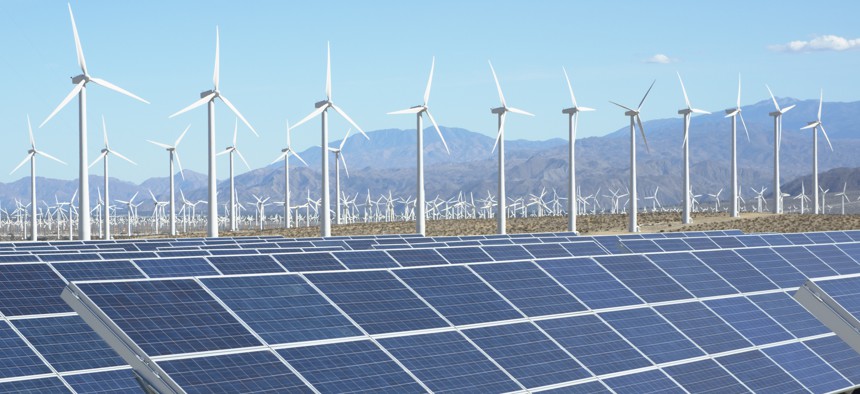Crunch data while the sun shines and save it in an 'information battery'

GettyImages/GIPhotoStock
"Information batteries" can make better use of green energy by storing partially computed data for processing later, researchers at the University of Southern California's Viterbi School of Engineering suggest.
Hyperscale computing companies like Amazon, Microsoft, Meta and Google were the three largest buyers of solar and wind power in 2021, accounting for more than half of clean energy power purchases, according BloombergNEF, a research provider on low-carbon technologies.
As the cost of renewable energy drops and organizations adopt sustainability programs, green energy is expected to become more widespread. One obvious drawback to solar and wind energy production is that while the power supply must be constantly available, the sun only shines during the day and winds are unpredictable. Another is that if demand drops, renewable energy is dumped off the grid.
Better batteries could save the excess green energy for when it's needed, but current storage solutions are expensive and difficult to scale, according to researchers at the University of Southern California's Viterbi School of Engineering.
Barath Raghavan, a USC Viterbi assistant professor in computer science, and Jennifer Switzer, a Ph.D. student from UC San Diego have suggested that surplus renewable energy could be stored not in lithium ion batteries or in pumped-storage hydroelectricity system -- but as data. That’s the idea behind what they call “information batteries."
Their solution balances some of the supply and demand for power by conducting energy-intensive calculations when renewable energy is in excess and storing the results, or completed computations, for use when less power is needed, essentially load-shifting the compute demands.
“We had the observation that if we can predict possible computations that might occur in the future, we can do those computations now, while there is energy available, and store the results, which now have embodied energy,” said Raghavan, whose research focuses on systems and sustainability.
As an example, the researchers pointed to YouTube, which processes more than 700,000 hours of videos every day to accommodate different resolutions. Because many of these computations can be predicted, they can be performed when there is excess green energy. The data is then stored for later use, when there is less renewable energy available, essentially moving electricity consumption from one time period to another, USC Viterbi officials explained.
While the idea itself is relatively simple – cloud service providers currently run latency-tolerant workloads at night when other demands are low -- the challenge, according to the researchers, is determining what, where and when to perform the computations so results can be efficiently retrieved later. They used a recurrent neural network for predicting task requests and distributing upcoming work based on time of day as well as data center location, taking advantage of participating data centers located where solar and wind production is high.
The "information battery" can be more efficient than lithium-ion batteries, Raghavan said, depending on the types of computations and the predictability of power. “In the civilization-scale challenge of sustainability,” he said, “we need every tool we can get.”
Read the full paper here.






